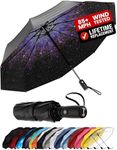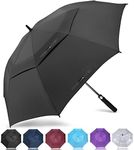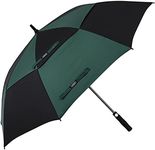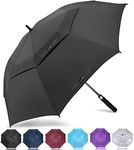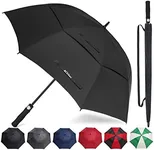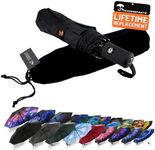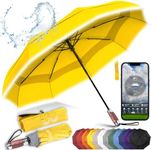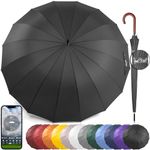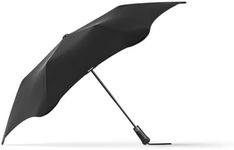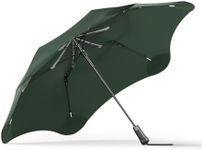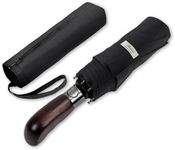Buying Guide for the Best Umbrellas
Choosing the right umbrella involves considering various factors that will ensure you stay dry and comfortable during rainy days. It's not just about picking the first one you see; you need to think about where and how you'll be using it, as well as your personal preferences in terms of size, weight, and style. Understanding the key specifications of umbrellas will help you make an informed decision that suits your needs.SizeThe size of an umbrella is crucial as it determines the coverage area and portability. Umbrellas come in various sizes, from compact travel umbrellas to large golf umbrellas. A compact umbrella is ideal for those who need something lightweight and easy to carry, perfect for city dwellers or travelers. On the other hand, a larger umbrella provides more coverage, which is great for those who need to stay dry in heavy rain or want to share the umbrella with someone else. Consider your typical usage scenario to decide which size is best for you.
MaterialThe material of an umbrella affects its durability and performance. Common materials for the canopy include polyester, nylon, and pongee, each offering different levels of water resistance and durability. Polyester is affordable and dries quickly, nylon is lightweight and strong, while pongee is known for its luxurious feel and durability. The frame material, often made from steel, aluminum, or fiberglass, impacts the umbrella's strength and weight. Steel is sturdy but heavier, aluminum is lightweight but less durable, and fiberglass offers a good balance of strength and weight. Choose materials based on how often you use the umbrella and the weather conditions you typically face.
Opening MechanismThe opening mechanism of an umbrella can be manual, automatic, or semi-automatic. A manual umbrella requires you to push it open and closed, which can be more reliable but less convenient. An automatic umbrella opens with the push of a button, offering convenience, especially when you have your hands full. Semi-automatic umbrellas open automatically but require manual closing. Consider how often you need to quickly open or close your umbrella when deciding on the mechanism.
Wind ResistanceWind resistance is an important factor if you live in a windy area. Some umbrellas are designed to withstand strong winds without flipping inside out, often featuring a vented canopy or a flexible frame. A vented canopy allows wind to pass through, reducing the risk of inversion, while a flexible frame can bend without breaking. If you frequently encounter windy conditions, look for umbrellas specifically labeled as windproof or stormproof.
WeightThe weight of an umbrella can affect how comfortable it is to carry around. Lightweight umbrellas are easier to carry and are ideal for those who are always on the go or need to pack them in a bag. However, lighter umbrellas might compromise on durability and wind resistance. Heavier umbrellas, while more cumbersome, often offer better durability and stability in adverse weather conditions. Consider how much weight you are willing to carry and balance it with the need for durability.
Design and StyleThe design and style of an umbrella can reflect your personal taste and complement your wardrobe. Umbrellas come in a variety of colors, patterns, and shapes, from classic black to vibrant prints. While style is a personal choice, consider choosing a design that suits your lifestyle and the occasions you plan to use it for. A classic design might be more suitable for professional settings, while a colorful or patterned umbrella can add a fun touch to casual outings.
